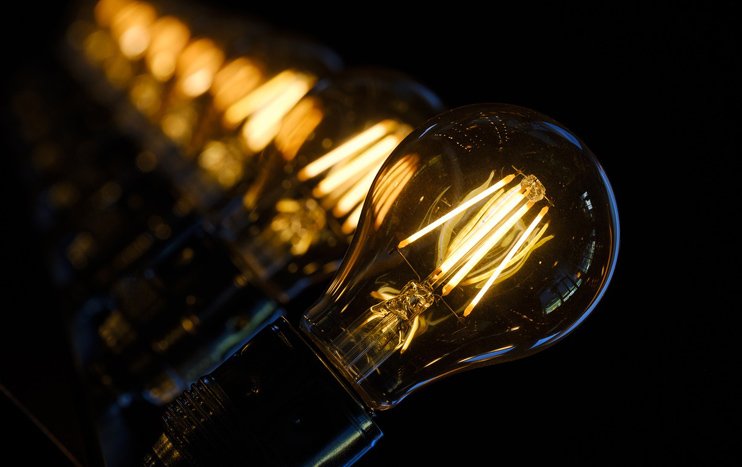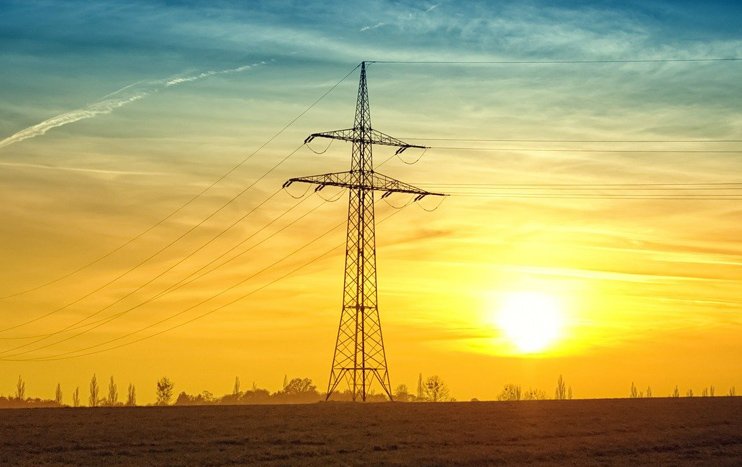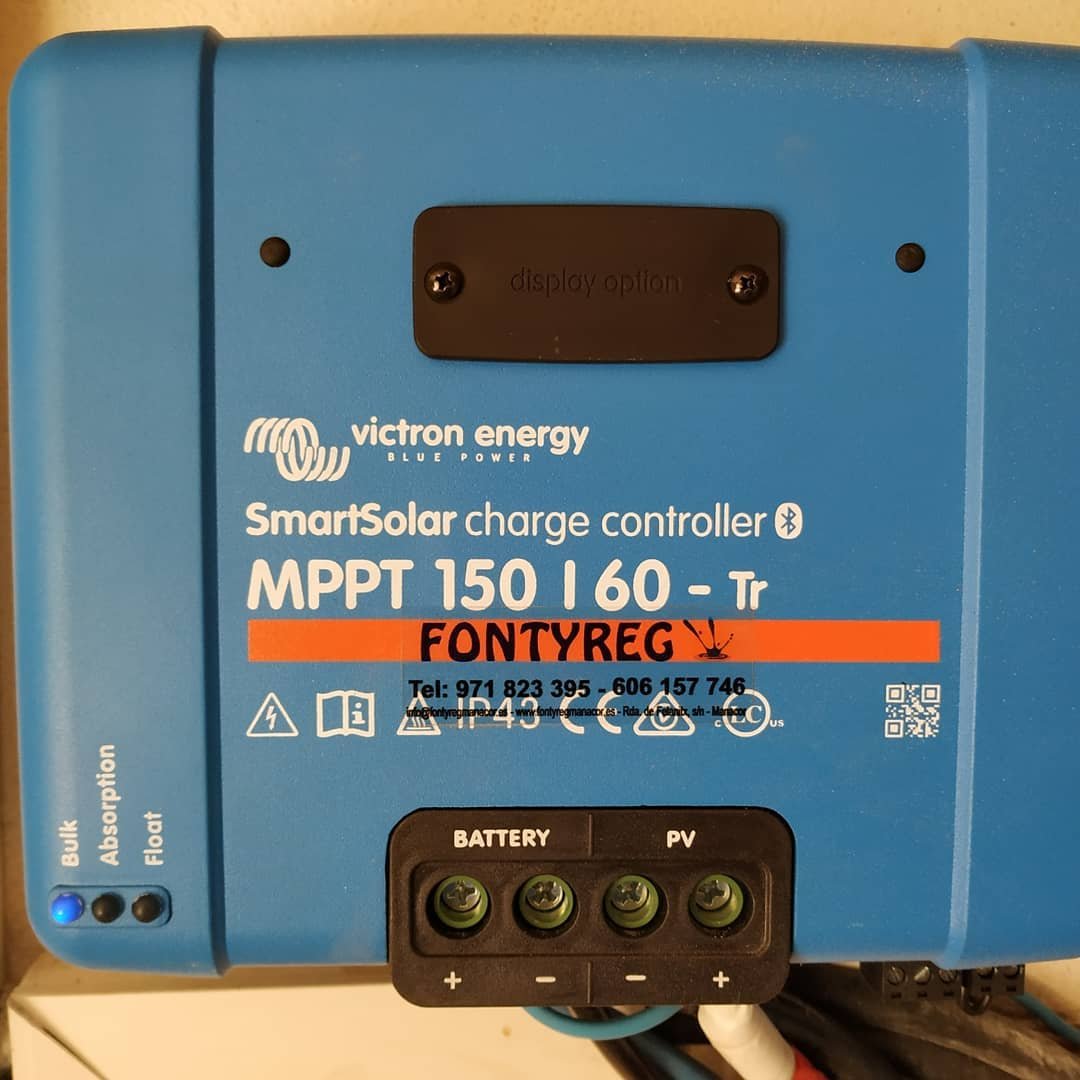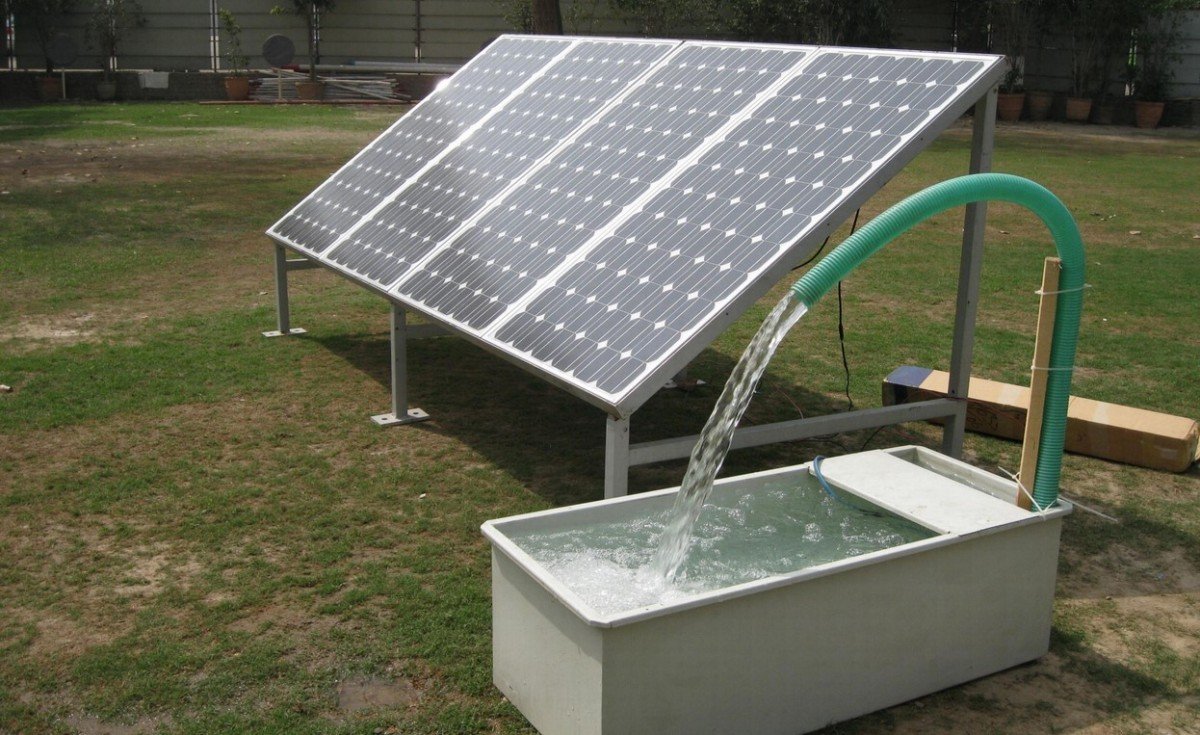
How many solar panels do you need for 1 kW, 3 kW, 6 kW, or 10 kW and what does it depend on?
Year by year, interest in photovoltaics is growing, and with it the prices of electricity. Many customers have a dilemma: adapt to rising electricity prices or produce their own energy and care for the environment ? Many of them wonder how much kW will be produced by their own photovoltaics and whether it is worth investing in alternative energy sources. The prospect of lower energy costs is tempting.
- Is investing in green energy profitable?
- How much electricity does a solar panel produce and what does its size matter?
- How many solar panels do you need for a 100 m2 house?
These are just a few of the questions that customers often ask.
Why is it worth investing in solar panels?
Own photovoltaics means easier and ecological obtaining of energy from a natural, inexhaustible source. A carefully selected photovoltaic installation allows you to significantly reduce monthly electricity bills. It allows you to get the amount of energy that is necessary for the needs of a household , agriculture , company or your own solar farm at a given moment.
On the other hand, the generated energy surpluses can be stored, sold and received from the Distribution Network Operator as a prosumer after signing the contract.
It is important that in the weaker heating months, eg during winter – they can be recovered according to the “Discount System” in accordance with the Act on renewable energy sources of July 1, 2016.
How does the conversion of solar energy to electricity work?

How does the conversion of solar energy into electricity work? The inverter in the photovoltaic system converts direct current into alternating current, which is later in the sockets. The Distribution System Operator has to replace the meter with a bidirectional one, which will enable the measurement of the energy consumed from the grid and that which can later be recovered from the grid according to the balancing system. Such a meter counts the energy that was obtained, for example, for the needs of a building and which is directed to the power grid. The balancing system enables the use of surplus energy in certain values. When installing up to 10kW, you can recover up to 80% of the energy surplus!
Are you wondering how much a solar farm above 10 kW will produce ? If you have an installation with an energy consumption between 10kW and 50 kW, you can recover as much as 70% of the surplus!
Investing in photovoltaic panels is the most popular way to ecologically produce your own electricity. The main benefit is low and fixed electricity charges regardless of any increase in energy prices. For many customers, the motivation is precisely this independence, obtaining energy from the sun and care for the natural environment. Investing in photovoltaic panels is therefore beneficial and financially profitable for both households, companies and individual customers.
Own photovoltaic panels and cells – what should you know before buying?
Solar panels are also referred to as solar modules.
They consist of photovoltaic cells that draw energy from the sun and special cabling, e.g. solar cables, which are adapted to generate the highest DC voltage and the so-called connectors of various standards, which also determine the safety of the installation. On the other hand, an inverter, which is often also referred to as an inverter, converts direct current into alternating current.
Assuming that the customer buys properly selected photovoltaic panels tailored to individual heating needs, he can save up to several thousand zlotys a year on electricity !
Considering the type of panels, their respective parameters and 5% annual inflation of electricity prices, such savings are possible. It is a simple way to gain some independence from an energy company, to obtain your own energy in accordance with the care for the natural environment. The exact amount of savings can be calculated using the calculator available on the website.
Example: If a customer wants to use 5 solar modules with a value of 370, he will get approx. 1.85 kW of energy. Therefore, the savings calculator on our website will display an individual valuation for photovoltaics, as the minimum energy value for calculations using the calculator is 2kW.
Which panels should you choose and which ones are worth investing in?
There are many different types of photovoltaic panels from Polish and global producers on the market. At N Energia, you can order the installation of a photovoltaic installation with proven and safe panels from well-known manufacturers: ZNShine Solar and Selfa .
- ZNShine Solar Panelsit is characterized by increased fire and chemical resistance. They are extremely resistant to ammonia, salt mist and the spread of fire with the use of glass from the bottom (“double glass”). N Energia customers receive 15 years for defects and faults, and a 30-year performance warranty from the manufacturer. The manufacturer has additionally provided 30-year yield guarantee insurance in the world’s largest reinsurance company, Munich RE. ZNShine Solar panels are distinguished by an innovative graphene coating, which, thanks to its hydrophilic properties, improves the work and increases the efficiency of modules: dust quickly flows down with water, which is not able to stay on the surface of the panels. ZNShine Solar models are available in black frames and in various dimensions:
- Selfa photovoltaic panels are panels produced in Poland and are best suited to the weather conditions in the country, which also affects their efficiency. They are characterized by a special self-cleaning surface and high resistance to external factors. They are famous for their solidity. The manufacturer’s warranty for the performance of Selfa panels for N Energia customers is 30 years. Our offer includes Selfa 540 monocrystalline cells (228 cm x 113 cm), which look very aesthetic when placed on black roofs.
How many solar panels should you choose and what does it depend on?
How many solar panels do you need for a 100 m2 house?
It is estimated that one household, i.e. a family with two children, consumes between 4,000 and 6,000 kWh per year. For such a farm, an installation generating electricity with a peak power of 4 to 6 kW is sufficient.
Each building has different energy needs that should be calculated taking into account also, inter alia, power of photovoltaic panels. Choosing the right installation for your home depends, among others, on from:
- annual household electricity demand,
- the shape of the roof,
- its surface,
- as well as the angle of the roof slope,
- exposure of the panels to sunlight and their rated power.
It is on the basis of these values that the energy demand of the household can be calculated.
When calculating, you should take into account the number of household appliances powered by electricity, the needs of loved ones and last year’s electricity bills, as well as the dimensions of the photovoltaic panels and their rated power, which is on the back of each panel. Future investments are also important, e.g. installation of a heat pump at home, replacement of equipment with more energy-efficient ones, or other investments that require additional energy expenditure.
How much electricity does a solar panel produce?
How to calculate how much electricity a solar panel produces? The average price of electricity with distribution services is approximately PLN 0.617 for 1 kWh of energy consumed. However, the calculation of the cost of electricity depends on many other factors, including on current prices on exchanges, demand, tax fees, rates of tariffs to which the farm is subject, requirements of national and international institutions, weather conditions.
The electricity consumption generated by a photovoltaic installation is measured in kilowatt hours (kWh) , which is the unit that checks the installation’s consumption per 1,000 watts of power. The sum of the kilowatt hours consumed allows you to calculate the electricity consumption in your home. This billing system is mainly used in households, because the average monthly electricity consumption ranges from a few to several thousand kWh. In the case of photovoltaics, much larger energy units are used for the use of companies.
- How many solar panels do you need for 3 kW? It is estimated that per 1 kW you need approx. 3 photovoltaic panels, and the necessary area on the roof for such an investment is approx. 4.5 m2. However, to obtain 3 kW, you need about 9 photovoltaic panels and an area of about 17m².
- How many solar panels do you need for 4kw? In a situation of such energy demand, 11 photovoltaic panels are enough.
- How many solar panels are needed for 6 kw? If the client wants to obtain this amount of energy, he must install 17 panels on the roof or on the ground.
- However, for a value of 10 kW , as many as 28 panels are necessary.
What is the power of solar panels and what does it depend on?
Many people wonder how much energy a solar panel will produce .
The power of photovoltaic panels depends mainly on:
- current weather conditions,
- the exact dimensions of the panels,
- the arrangement of the modules in relation to each other,
- solar radiation intensity,
- the angle of the roof inclination,
- the degree of shading of the modules,
- proper exposure of the installation to solar radiation,
- installation technology and the amount of energy consumed.
The efficiency of one photovoltaic panel, i.e. how much electricity can be produced by one panel under standard conditions (the so-called panel peak power), is known as the kilowatt-kWp unit.
Example: if one solar panel with a power of 360 W will obtain energy for an hour, the customer’s yield will be less than 360 Wh of energy. The annual electricity requirement for a family of 4 is 4500 kWh. To calculate how many panels will be needed for the energy needs of the farm, it is enough to divide this value by the annual yield. In this case, it is 13 photovoltaic panels that meet the energy needs of a family of 4.
In scientific studies, the efficiency of photovoltaic panels is tested in laboratory conditions. Most often it is assumed that the instantaneous power of solar radiation is approx. 1000 W per m². However, the air temperature does not exceed 25 ° C, and the wind speed is not greater than 1m / s and these are the so-called standard measurement conditions for this type of investment. That is why the most popular photovoltaic panels with silicon cells work best at an optimal temperature of 25 ° C. When choosing panels, pay special attention to their type, dimensions and rated power. The rated power of the panels is shown on the back of each panel.
The highest energy growth is generated by photovoltaic panels in May, and the lowest in the winter season from December to February, therefore their energy efficiency is variable and depends on temperature, sunlight, shade, wind speed and rated power.
It is worth knowing that if, for example, there is no space on the roof, you can consider ground mounting of photovoltaics on the plot or yard. The advantage is that there are no space restrictions. The exception is when we have a small plot of land or a carefully separated space for the needs of such an investment. The second aspect in favor of ground-mounted photovoltaics is greater ease of setting the panels at the right angle than on the roof. A well-chosen power of the panels and a carefully designed installation ensure safety.
How much energy does a photovoltaic cell produce?
Photovoltaic panels most often consist of silicon photovoltaic cells (polycrystalline or monocrystalline). In order to generate energy, they are usually connected by special cabling and then combined into modules that collect solar energy. The photovoltaic installation should be safe, and this is facilitated by carefully designed solar cables that carry the highest energy voltage and provide protection against the threat.
Before purchasing a photovoltaic installation, it is also worth considering a fire protection system with a special isolating switch that allows the voltage of the modules to be grounded with a special extinguishing foam and minimizes the risk of fire hazards.
Example: Choosing a 6kW installation and investing in it from 20 – 30,000 PLN, the customer can also choose a fire protection system for about PLN 1,500. Customers who choose such protection have a special sticker on the box that informs others about the existence of a photovoltaic installation with a fire protection system.
The effectiveness of the panels depends on the weather conditions, and they are variable and dependent on the seasons, but also on the way they are arranged. The panels are installed in series. If one of them is shaded by, for example, 30% compared to the rest, then the entire series of panels is 30% less efficient. However, to increase the energy efficiency of the panels, optimizers are installed. Their installation makes each module work individually, achieving its maximum efficiency. It is worth using optimizers when, for example, some panels are shaded by a tree during the day.
When choosing a SolarEdge inverter, which costs from a dozen to several dozen thousand zlotys, you can install more than two rows of panels, but under each of them there must be optimizers, which cost about PLN 200 per piece.
Example: Two 5kW photovoltaic installations may differ in installation price by up to 20-30% due to the fact that they are equipped with two completely different inventories.
Most photovoltaic companies verify where on the plot or the roof the highest yields can be obtained under standard measurement conditions, so that the installation generates the best yields. For this purpose, it determines the most favorable weather conditions for the production of electricity and the optimal air temperature, which is 25 ° C. For this reason, it is so important to properly select a place for installations on the plot, individual consultation with the company, as well as determining the most appropriate angle of inclination of the panels in relation to solar exposure.
How to calculate how much current the panel produces?
The average insolation in Poland is approx. 1600 hours per year. It is worth remembering about the difference between the intensity of solar radiation and sunlight .
- The first factor is the power of solar radiation , which covers one square meter in one second of radiation. The intensity of radiation is calculated using the number of watts per square meter.
- In contrast, insolation is the number of hours that relates to the action of sunlight falling on the Earth’s surface.
Taking into account the solidly constructed photovoltaic installation and sufficient exposure of the panels to solar radiation, 1kWp of photovoltaic panels can be used to obtain 900–1000 kWh of electricity per year. If the installation consists of, for example, 15 monocrystalline panels of 300 Wp each, the amount of renewable energy obtained will be approx. 4,275 kWh.
Is own solar farm profitable?
The profitability of the investment mainly means lower and constant charges from the power grid. For the purchase of photovoltaics from 2kW, you can get special funding from subsequent programs such as My Electricity or Clean Air , which effectively reduce investment costs.
In order to receive a grant, it is enough to meet several conditions: start the installation of the installation and complete it within 3 years, and buy products that can be deducted from your income and show them in the annual PIT statement.
The payback time of the installation depends mainly on the power and efficiency of the panels tailored to the needs of the building, but the return on investment itself takes several years.
We will help you at every stage of the investment
If you want to be sure that the photovoltaic installation will be safe and designed in accordance with your needs, and all formalities are completed in the best possible way, please contact us – we will call you back. We will guide you through the entire process while maintaining the highest standards of service. We look forward to working with you!






